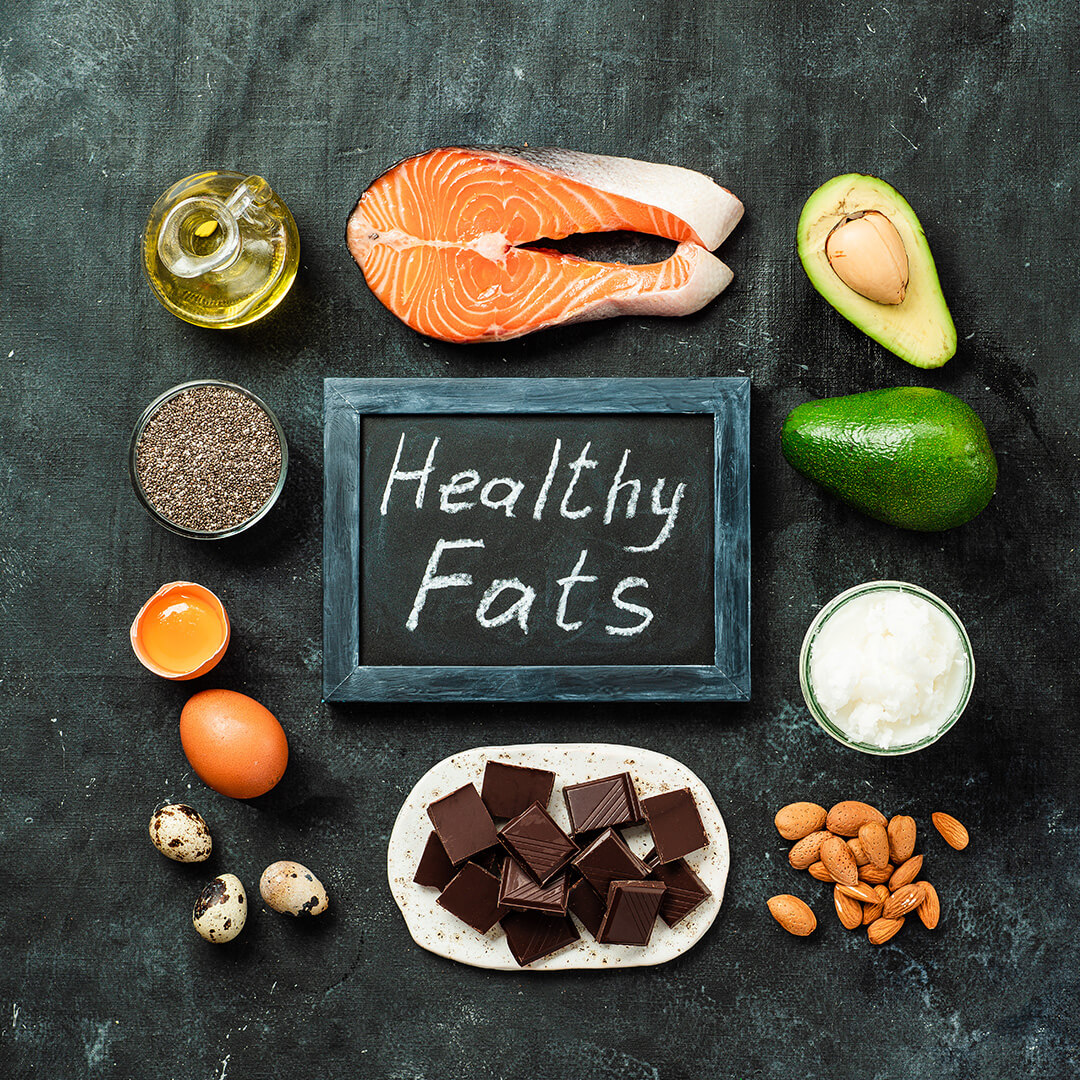We often hear or read health statistics and reports about dietary fats (that is, fats we eat). In general, fats are given a bad rap, but we do need fats in our diet to survive. Fats are critical in the following ways:
- Supply fatty acids that our body cannot produce
- Supply energy
- Keep us warm
- Help with the absorption of certain vitamins
- Build cells
- Protect your organs
- Help produce hormones
All fats contain the same number of calories, 9 calories per gram, so there isn’t one fat that adds more or less energy (or, if eaten in excess, weight) to our body. Recommended daily amounts for fats vary but, in general, 20 – 35% of you daily food intake should be fats. The key is watching both the amount and the type of fats you consume.
Fat in our bodies is measured in various ways. It is the fat ln our blood, or lipids, that seem to cause more trouble than other forms of fat in our body. Lipids affect our circulation health and cholesterol levels, which in turn affect our risk of stroke, heart disease, and other organ damage.
There are two kinds of dietary fat:
- Saturated Fats
- Unsaturated Fats
- Monounsaturated fats
- Polyunsaturated fats
- Trans Fats (also known as trans fatty acids)
Saturated Fats
Saturated fats are usually solid at room temperature and are mainly from animal sources (fatty meats, sausages, burgers, bacon, kebobs, butter, ghee, margarine, cheeses, etc.) but also include coconut and palm oils. They are used in the production of many processed foods and bakery goods (pastries, pies, cakes, biscuits, cookies, puddings), deep-fried items, and, yes, chocolate.
We know that only 20- 35% of our daily intake should be fats and, within that amount of daily fat, only 10 – 22% should be saturated fat. For a 2000 calorie per day diet, that works out to between 22 and 50.5 grams of saturated fat per day.
Unsaturated Fats
Unsaturated fats are the safest and most important fats to eat. They are usually liquid at room temperature and are found in vegetable and fruit oils (except coconut and palm oils, which are saturated fats), nuts, and fish. Unsaturated fats should comprise about 50 to 65% of your daily fat intake (in other words, most of the fat you eat should be unsaturated fat) because they lower cholesterol (high levels of cholesterol lead to higher rates of stroke and heart disease), reduce inflammation (which also affects stroke and heart attack rates), and strengthen cell membranes throughout the body.
Monounsaturated Fats
Monounsaturated and polyunsaturated fats are the healthiest fats. The difference between the two fats is in the chemical bonds between the hydrogen and carbon atoms within the fat molecule. Monounsaturated fats have only a single bond while polyunsaturated fats have more than one bond.
Despite the healthy aspect of monounsaturated fats, it is important to remember that these fats still have 9 calories per gram, which means that if you overeat monounsaturated fats, you will gain weight (and the same amount of weight) as if you overeat any other kind of fat. Reducing or maintaining the monounsaturated fats you consume is important.
Polyunsaturated Fats
Polyunsaturated fats, along with monounsaturated ones, are the healthiest fats to eat. As mentioned above, the difference between mono- and polyunsaturated fats is the type of chemical bond within the fat molecule. Polyunsaturated fat contains the same number of calories of any other fat—9 calories per gram. Thus, over consumption of polyunsaturated fats will lead to weight gain just as overconsumption of any other fat will do.
Trans Fats
There are two kinds of trans fats—naturally-occurring and artificial. While naturally-occurring trans fats are troublesome, they are only found in small amounts in some meat and dairy products. Artificial trans fats are man-made and particularly scary because they are used in higher amounts than naturally occurring trans fats and raise your bad cholesterol levels (like saturated fats) and are the only fats that lower your good cholesterol levels and, thus, increase the risk for heart disease, stroke, and organ damage more than saturated fats!
Artificial trans fats were created by the food industry and found to improve food flavor, reduce food production costs, and have longer shelf lives than saturated and naturally occurring-trans fats. As such, despite being seen as harmful food additives, they are still used in North American and elsewhere in processed foods.
Ways to Reduce Saturated and Trans Fat Intake
- Eat lots of fruits, vegetables, and whole grains.
- Use natural, non-hydrogenated vegetable oils (olive, avocado, canola, sunflower, flaxseed, walnut, sesame, grapeseed).
- If buying processed foods, look for those made with non-hydrogenated oils.
- Use soft margarines made with non-hydrogenated oils.
- Limit fried, deep-fried, and commercially baked goods as much as possible (these contain trans and saturated fats).
A Word About Chocolate
Chocolate, even sugar-free chocolate, should be eaten in limited amounts—particularly by those trying to lose weight. All chocolate contains saturated fat, that’s why it tastes so good, however Ross Sugar Free Chocolate does not contain any added sugar (Ross Sugar Free Milk Chocolate does have a small amount of milk sugar in it) and is much higher in fiber than regular chocolate. A Ross Sugar Free Dark Chocolate bar contains 9 grams of fiber while a regular dark chocolate bar of the same size has only 2.4 grams of fiber and a bar of Ross Sugar Free Milk Chocolate has 8 grams of fiber while regular a milk chocolate bar of the same size has only 1.2 grams). Among several other benefits, fiber helps regulate fluctuations in blood sugar levels, helps with weight loss, and aids digestion. This, in addition to containing no added sugars, makes Ross Chocolates the best choice of chocolate for those who must limit their sugar intake due to diabetes.
Ross Chocolates — Quit Sugar, Not Chocolate!






0 Comments